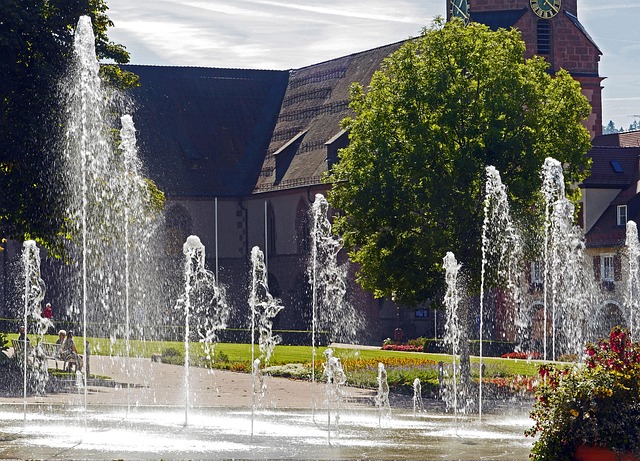In recent years the concept of green water management has evolved from a niche conservation strategy into a cornerstone of sustainable gardening and habitat restoration. By prioritizing the capture, use, and regeneration of rainwater and excess storm runoff, growers and homeowners alike can create vibrant, self‑sustaining ecosystems that thrive even under shifting climatic conditions. Green water management is more than a water‑saving technique; it is a holistic approach that reconnects gardens with the natural hydrologic cycle, improves soil health, and supports a diverse array of native species.
The Science Behind Green Water Management
Green water refers to moisture stored in the soil that is available to plants, as opposed to blue water, which is water that is removed from the water cycle by irrigation, consumption, or industrial use. When rainwater is diverted into the garden instead of being channeled to the municipal system, it percolates through the soil, replenishes groundwater, and creates a reservoir of moisture that plants can tap during dry spells. This process mimics natural forest and grassland ecosystems where rainfall infiltrates, is stored, and slowly released to the root zone.
- Infiltration rates are enhanced by removing barriers such as impermeable pavement.
- Soil structure improves through increased microbial activity and organic matter retention.
- Groundwater recharge contributes to broader watershed health.
Key Components of a Green Water Management System
A functional system typically includes rain barrels, permeable paving, swales, and bio‑filtration beds. These elements work together to capture rainfall, reduce surface runoff, and direct water into the garden where it can be used by plants and wildlife. The design must consider local rainfall patterns, soil type, and the specific plant community desired. In addition, incorporating mulch, compost, and native vegetation ensures that the captured water is used efficiently and that the habitat remains resilient.
Benefits for Garden Habitats
Implementing green water management transforms ordinary lawns into thriving habitats. By allowing water to seep into the soil, plants develop deeper root systems, which improves drought tolerance and reduces the need for supplemental irrigation. A well‑watered garden supports pollinators, beneficial insects, and ground‑dwelling mammals. Moreover, the presence of varied plant layers—groundcovers, shrubs, and trees—creates shelter and food sources for a wider range of species, turning the garden into a micro‑ecosystem that mirrors natural habitats.
Case Study: Native Pollinator Gardens
In a suburban backyard in the Midwest, a homeowner installed a 200‑gal rain barrel, a series of swales, and a permeable paving area. The collected water was used to irrigate a mix of native wildflowers, legumes, and berry shrubs. Over three growing seasons, the site hosted over a dozen bee species, several ladybug populations, and even a small flock of songbirds. The deeper, moisture‑rich soil allowed the plants to flourish, creating a self‑sustaining, wildlife‑friendly space without additional irrigation.
“The garden has become a sanctuary for local fauna, and the water table beneath has risen noticeably,” said the homeowner.
Environmental Impact Beyond the Yard
Green water management reduces the overall demand on municipal water supplies, especially during peak summer months. By diverting rainwater away from storm drains, homeowners lower the volume of runoff that reaches local rivers and streams, mitigating erosion and improving water quality downstream. The reduced stormwater load also lessens the strain on sewage treatment facilities, which often struggle to handle large influxes of untreated runoff. In aggregate, these practices help create healthier, more balanced aquatic ecosystems.
Urban Stormwater Mitigation
Urban environments are especially prone to “flash floods” due to high percentages of impermeable surfaces. Swales and rain gardens, core components of green water management, intercept and filter stormwater before it enters storm drains. They can remove sediments, nutrients, and pollutants, delivering cleaner water back into the soil and into the underground aquifer. This not only protects nearby waterways but also replenishes the groundwater that feeds wells, streams, and wetlands.
Practical Steps for Home Gardeners
Below is a step‑by‑step guide that integrates green water management into everyday gardening practice. Each step can be adapted to various climate zones and garden sizes.
- Assess Your Landscape. Identify impermeable areas, natural water flow paths, and existing drainage features.
- Install Collection Systems. Choose between rain barrels, underground cisterns, or rooftop harvesting based on roof area and rainfall intensity.
- Create Permeable Zones. Replace concrete or asphalt with permeable paving, gravel, or grass to encourage infiltration.
- Construct Swales or Berms. Use vegetation to stabilize these features and trap sediments.
- Use Mulch and Organic Matter. Apply a 3–4 inch layer of mulch around plants to reduce evaporation and improve soil structure.
- Plant Native, Drought‑Tolerant Species. Prioritize deep‑rooted, locally adapted plants that thrive on limited moisture.
- Monitor Soil Moisture. Use a simple probe or a moisture meter to ensure plants receive adequate water without over‑watering.
- Adjust as Needed. Refine the system after heavy rains or dry periods to keep it functioning optimally.
Maintenance Tips
Regular upkeep guarantees long‑term success. Inspect rain barrels for debris, clean filters, and check for leaks. Weeds in swales should be removed promptly to prevent clogging. Mulch layers may need replenishment after heavy use. Seasonal monitoring of plant health and soil moisture will help detect problems early, ensuring that the green water management system continues to benefit both garden habitats and the surrounding environment.
Community and Policy Integration
Beyond individual gardens, green water management aligns with municipal stormwater regulations, green infrastructure programs, and conservation easements. Communities that adopt widespread rainwater harvesting and permeable landscaping can reduce flood risk, lower infrastructure costs, and enhance local biodiversity. Incentive programs, such as tax credits or rebates for installing rain barrels and green roofs, encourage homeowners to participate. When policy and practice converge, the ecological and social benefits multiply.
Educational Outreach
Workshops, seed exchanges, and demonstration gardens provide hands‑on learning opportunities for residents. By sharing success stories, best practices, and maintenance tips, communities can build a culture that values green water management as a core component of sustainable living. School gardens and university research projects further promote scientific understanding and generate data that can inform future policy decisions.
Future Directions and Innovations
Technological advancements are expanding the scope of green water management. Smart sensors can now monitor soil moisture, weather forecasts, and evapotranspiration rates in real time, allowing precise irrigation decisions that conserve water while keeping plants healthy. Bioengineered swales and engineered porous pavements reduce maintenance while maintaining high infiltration rates. As climate models predict more extreme weather events, these innovations will become essential tools for building resilient ecosystems.
Research Opportunities
Scientists are exploring the interactions between green water management and soil microbiomes, the potential for carbon sequestration, and the role of these systems in mitigating urban heat islands. By fostering interdisciplinary research, we can refine techniques and demonstrate the tangible benefits of green water management to a broader audience.
Conclusion
Green water management bridges the gap between human cultivation and natural ecological processes. By capturing, storing, and reusing rainfall, we can create gardens that are not only beautiful but also vibrant habitats supporting diverse wildlife. The ripple effects extend far beyond the yard—improving groundwater recharge, reducing stormwater runoff, and supporting healthier ecosystems across the landscape. As climate uncertainty grows, the adoption of green water management will become an increasingly vital strategy for sustaining both our gardens and the planet’s ecological balance.




